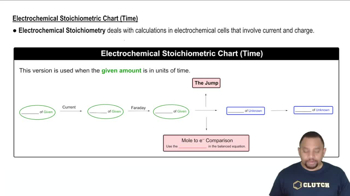A 75-kg human has a dose of 32.8 rad of radiation. How much energy is absorbed by the person's body? Compare this energy to the amount of energy absorbed by the person's body if he or she jumped from a chair to the floor (assume that the chair is 0.50 m from the ground and that all of the energy from the fall is absorbed by the person).
Ch.21 - Radioactivity & Nuclear Chemistry

Chapter 21, Problem 75
PET studies require fluorine-18, which is produced in a cyclotron and decays with a half-life of 1.83 hours. Assuming that the F-18 can be transported at 60.0 miles/hour, how close must the hospital be to the cyclotron if 65% of the F-18 produced makes it to the hospital?
 Verified step by step guidance
Verified step by step guidance1
insert step 1: Understand the problem by identifying the key information: the half-life of fluorine-18 (1.83 hours), the transportation speed (60.0 miles/hour), and the requirement that 65% of the F-18 must reach the hospital.
insert step 2: Use the concept of half-life to determine the decay constant (k) using the formula: k = \frac{0.693}{t_{1/2}}, where t_{1/2} is the half-life.
insert step 3: Calculate the time (t) it takes for the F-18 to decay to 65% of its original amount using the first-order decay equation: N_t = N_0 e^{-kt}, where N_t/N_0 = 0.65.
insert step 4: Solve for t in the equation from step 3 to find the time it takes for the F-18 to decay to 65% of its original amount.
insert step 5: Calculate the maximum distance the F-18 can be transported by multiplying the time (t) from step 4 by the transportation speed (60.0 miles/hour).
Key Concepts
Here are the essential concepts you must grasp in order to answer the question correctly.
Half-life
Half-life is the time required for half of a sample of a radioactive substance to decay. In this case, fluorine-18 has a half-life of 1.83 hours, meaning that after this time, only 50% of the original amount remains. Understanding half-life is crucial for calculating how much F-18 will be available when it reaches the hospital.
Recommended video:
Guided course

Zero-Order Half-life
Radioactive decay
Radioactive decay is the process by which an unstable atomic nucleus loses energy by emitting radiation. This process is random and can be quantified using the half-life. For the PET studies, knowing the decay rate of fluorine-18 helps determine how much of the isotope will still be viable upon arrival at the hospital.
Recommended video:
Guided course

Rate of Radioactive Decay
Distance and time calculation
Calculating the distance based on speed and time involves using the formula distance = speed × time. In this scenario, the speed of transport is given as 60.0 miles/hour, and the time until a significant amount of F-18 decays must be calculated based on its half-life. This concept is essential for determining how far the hospital can be from the cyclotron while still receiving an effective dose of F-18.
Recommended video:
Guided course

Electrochemical Stoichiometric Chart (Time)
Related Practice
Textbook Question
1
views
Textbook Question
Suppose a patient is given 1.55 mg of I-131, a beta emitter with a half-life of 8.0 days. Assuming that none of the I-131 is eliminated from the person's body in the first 4.0 hours of treatment, what is the exposure (in Ci) during those first four hours?
Textbook Question
Complete each nuclear equation and calculate the energy change (in J/mol of reactant) associated with each (Be-9 = 9.012182 amu, Bi-209 = 208.980384 amu, He-4 = 4.002603 amu, Li-6 = 6.015122 amu, Ni-64 = 63.927969 amu, Rg-272 = 272.1535 amu, Ta-179 = 178.94593 amu, and W-179 = 178.94707 amu). a. _____ + 94Be → 63Li + 42He
Textbook Question
Write the nuclear equation for the most likely mode of decay for each unstable nuclide. a. Ru-114 c. Zn-58 d. Ne-31
